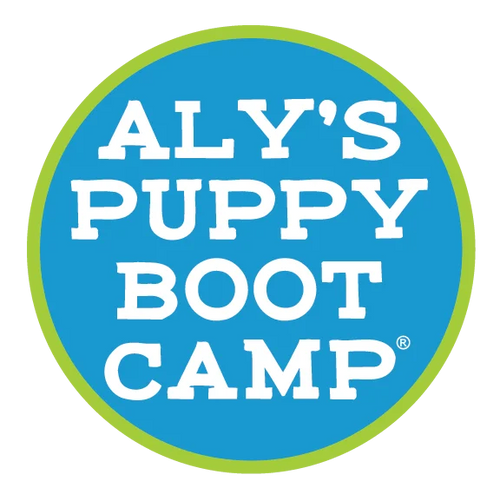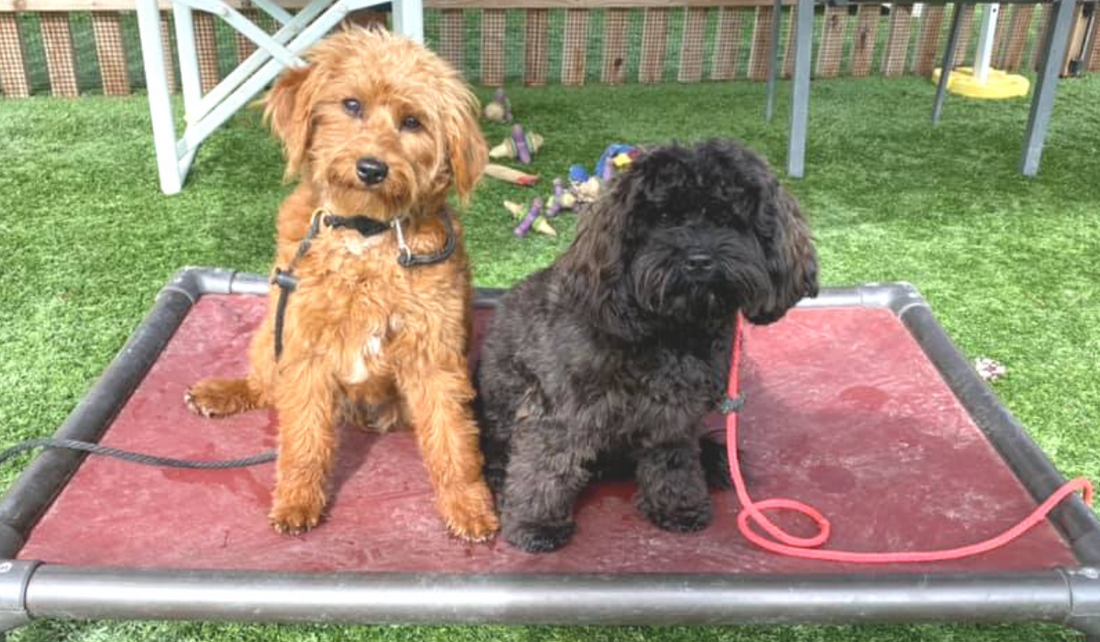Pillars of Pack Leadership: Pillar 1 Structure
Structure is living life purposefully and intentionally with your dog.
Structure is the foundation of our Pillars of Pack Leadership Training.
In the life of a dog, freedom needs to be earned. Dogs need jobs, and they need purpose. We set our pups up for success by putting them in situations where we are prepared to follow through, guide them, mentor them, build relationship with them, and enable them to make good choices. It’s never too late or too early to begin. All dogs, and even eight-week-old puppies, are naturally wired to accept this order, so let’s get it right from the start, and we’ve got it right for life!
Here are my top tips to add STRUCTURE to your dog’s day.
🐶 Crating and Appropriate Confinement
To crate or not to crate, that is the question.
The answer is simple: Crate your pup or emotionally and behaviorally immature dog! Crating is one component in the many strategies that you will use to bring structure, balance and calm to your pooch. Crating is far more instrumental in your dog’s state of mind than merely potty training. We use a crate daily in APBC’s training programs because it uses a dog’s natural den instincts and gives a dog a safe place to truly rest and relax. Dogs are not people, with our distaste for small, enclosed places. They are denning animals that, by choice, are born in a tightly confined area. Have you ever wondered why your dog loves to worm his way under a chair, table, or other tight space? Dogs look for spaces in your home or yard that mimic a den. Dog crates make excellent dens and provide that safe, secure environment dogs crave. When you cannot be with our dog supervising, you need to crate your dog.
Crate Training Benefits:
• People seriously underestimate a dog’s need for rest! Being a good dog is very hard work! Rest is a critical element in training. Crate time allows a dog to soak up his lessons and recharge and reboot his mindset.
• Crate training has been proven to be the fastest and most effective way to housebreak a dog at any age. A dog’s natural instinct is to avoid being near his own waste, so he’ll make an effort to avoid eliminating in his crate. They learn this from their mamas!
• Crate training provides a safe, comfortable, and familiar place wherever you go (hotels, vet, groomer, etc.).
• Destructive behaviors are often the result of an unsupervised dog being bored or anxious. Using a crate during an owner’s short-term absence eliminates this possibility. Dogs sleep the vast majority of the time when their owners are away anyway. Crating your dog while you’re away or unable to supervise keeps him from being destructive, stops nuisance behaviors, and prevents him from ingesting something that could potentially harm him.
🐶 Schedule for Success
A daily schedule is another element to adding beneficial structure to your dog’s day. Daily Structure is essential for your dog’s mental and physical well-being. Dogs like knowing exactly what to expect! To summarize, have a daily schedule for ANY dog, ANY age, ANY level of training, ANY problem. As your dog matures in your relationship together, you can phase out length of confinement times and alter bedtimes, etc.
Here’s an APBC SAMPLE SCHEDULE
7am Wake up/potty time: Potty rituals are for dogs of all ages, and their primary goal is to achieve immediate potty with no muss, no fuss. A potty ritual occurs every time your dog is taken out of his crate after a duration of 2 hours or more. You immediately go to the designated potty spot. Your pooch is on leash for all potty times. Nothing else happens until potty happens.
7-7:30am Tether to human as you get your morning tea/coffe, toast, etc.
7:30am Feed Breakfast in crate.
8-11am Morning Activities: Mornings are comprised of walks, runs, bike rides, play, tethering during chores, off leash work, pack walking, learning to JUST BE, and place.
11-1:30pm Crate time: Feed Lunch in crate for puppies or dogs that need to gain weight
1:30pm Wake Up/Potty Time
2-4:30pm Afternoon Activities: Afternoons are comprised of walks, runs, bike rides, play, tethering during chores, off leash work, pack walking, learning to JUST BE, and place beneficial socialization.
4:30-6:00pm Feed Dinner in Crate
6:00pm Wake Up/Potty Time
6:30-7:30pm A walk or romp of play is perfect at this time of day.
7-9pm End of Night Activities, Your dog is in the house, on leash, resting and hanging out with you as you watch TV, read, or relax. This is a great time to groom, snuggle, tether, or ROAM WITH RULES and work place.
9pm Potty Time
9:15pm Bedtime Into crate for the night
🐶 Sample of what the Out of the Crate Looks like with a Puppy
The general rule of thumb is about one minute of ‘activity’ for every week old they are until they are 20 weeks old. This sample is based upon the age of a 15 week old puppy. Alternate between motion activities (tether, play, drag the line) and more sedentary activities like (tether while you do bookwork, place) Also alternate between inside and outside activities during this block of time.
8 am - 8:15 after potty time begin tethering as you get breakfast ready and have your coffee
8:15- 8:30 Have a toy in the house and play for a bit, make sure to mold the sit and trade for a treat when asking for the toy
8:30 - 8:45 Take trash outside, get paper, have puppy run around with you while you do it.
8:45-9:00 Tether as you do dishes, laundry or bookwork
9:00- 9:15 Tether as you continue a more sedentary behavior
9:15- 9:30 WORK PLACE
9:30-9:45 Grab a toy outside and toss toy around, have the leash dragging along with puppy
9:45-10:00 stay outside for some yard cleaning, sweep the patio, have puppy dragging the line as you move around outside or tether if pup’s energy is up for it
10:00 - 10:15 Tether while you do a more sedentary activity
10:15 - 10:30 PLACE
10:30 - 10:45 Outside to have some move around time while you pull weeds, water the plants
10:45- 11:00 Tether or drag line outside as you move around the yard.
🐶 Rules to Live By
Dog trainers have always talked about having rules when living with dogs. Through the decades, I’ve heard about them, read about them and practiced them with trainers from around the world. Heck, rules are necessary for any living, breathing thing, when you are attempting to help them learn how to navigate our world in a civilized way. And as a mom, I can promise you, good kids and good dogs don’t happen by accident. They happen because of sound structure, healthy boundaries, mutual respect, great supervision and reasonable rules. My kids had rules in our house, and my dogs do too! These rules are intended to help you be successful and purposeful and keep you on track!
Rules are never intended to completely exist on day one and completely cease to exist on day 15. You need to gradually begin relaxing the rules over the course of time. 14 days to 90, depending upon the age of the dog, the dog’s issues, and the dog’s maturity. NEVER completely stop all of them at the same time. And, when needed, you bring them ALL back 100%, for a 14 Day re-boot, and I mean, serious, strict, 14 days!
1. Your dog will remain in crate unless on a Purpose-Driven Activity with you. Yes, you heard me right...doing one of these things or in CRATE! When your dog is out of the crate, LEASHES are ON!! Purpose Driven activities are:
· On a walk
· Tethered
· Played with
· On PLACE or
· otherwise purposefully interacted with like grooming or snuggle time. NOTE: Snuggle time must not be greater than any other activity. If you want 15 minutes of snuggle time, you must have 15 minutes of walk, tether, etc. END a snuggle session on PLACE. This helps your dog to understand that you control space. Most importantly, it gives you and your dog downtime to rest in between Purpose-Driven activities
2. Do not allow on couches and beds uninvited. There will be a time for it, just not yet! End a couch/bed session on PLACE.
3. If it’s play time, pull out a toy(s), interact with your dog and when playtime is over, the toys get put away! YES, you heard me right...put them away! Better yet, teach your dog how to put the toy away! (NOTE: A crate is a perfect place for a safe chew toy!)
4. No human food. Dogs can get Pancreatitis! Unless you are a canine nutritionist it’s a good idea to leave proper canine nutrition to the specialist.
5. Treats are only given for the following 3 reasons. 1) For Tricks. 2) For New Concepts & Focus 3) For unsticking a stuck dog. Careful, treats can easily over-excite your dog so treat wisely & purposefully!
6. If your dog is barking, whining and staring at you, do not give your dog attention for that behavior. It’s like when a kid is screaming at you, “Mommommommommom” It didn’t work for my kids and it doesn’t work for my dogs.
7. The most important thing you can do for your dog is socialization. The most dangerous thing you can do for your dog is socialization. Interrupt play often. Be aware of all the things around you. Be safe and purposeful.
8. Positions matter, mindsets matter- always! If your dog is pulling you down the street or sleeping on top of your couch above your head, it matters. If a dog is leaning on you uninvited, it matters. In a dog’s mind, where they are in relation to you has an affect on their mindset. Whether walking, resting or working, be aware of where your dog is.
9. Door Manners Matter! We are looking for a polite pause where a dog moves with you, upon your invitation, not barging out ahead of you! Note that all doors are doors (crate doors, car doors, back doors, front doors, etc). We are looking for a nice, relaxed, deep breath before you proceed. If your dog isn’t relaxed. WAIT. Breathe again. What you do at the door sets the tone for what happens on the other side of it.
10. Be mindful of how and when you speak to your dog. Have you heard someone in their highest, squeaky, baby-talk voice say something like “Are you ready for your walk? READY BABY? READY????” and with each “ready” their voice intensifies while the puppy begins to jump, spin and leak out excited pee! You get the picture, right! What you say matters. When you say it matters. Be mindful of that.
Structure by it’s very definition is to “arrange according to a plan; give a pattern or organization to.” and structure is a major part of helping your dog learn how to navigate this human world in a safe, sane and civilized way!
To read about all of our Pillars of Pack Leadership, check out this overview.



